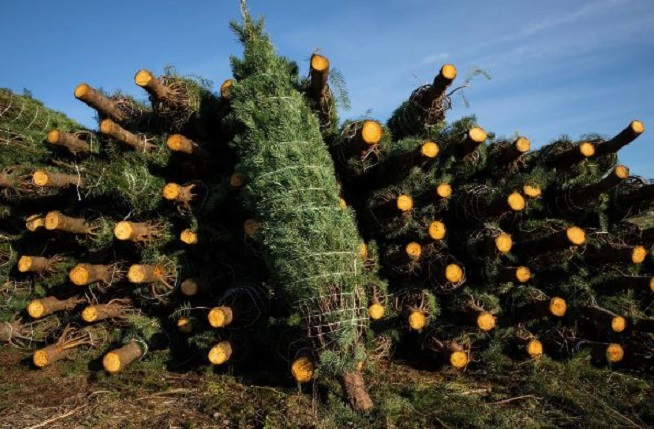Amid the ongoing climate crisis, where the cooling and oxygenating properties of trees are increasingly valued, the seemingly counterintuitive act of chopping down real Christmas trees is gaining support from environmentalists. Real Christmas trees, cultivated on tree farms, are endorsed for their ecological benefits over fake, petroleum-based alternatives that are often shipped from distant locations.
Christmas tree farms, managed by organizations such as the Society for the Protection of New Hampshire Forests, contribute to ecological diversity. Nigel Manley, overseeing a Christmas tree farm, observed that the open spaces around younger trees attracted ground nesters like bobolinks, killdeer, and woodcocks. Deer hid their fawns in the long grasses, while various bird species nested in older trees, contributing to the ecological balance.
Environmentalists argue that Christmas tree farms can function similarly to young forests. Typically, two to three saplings are planted for every tree harvested, contributing to carbon sequestration and providing economic incentives for landowners to keep green spaces. Forest ecologists emphasize the role of Christmas tree farms in pulling carbon from the atmosphere, cleaning the air, and preserving landscapes from development.
Andy Finton, a forest ecologist with the Nature Conservancy in Massachusetts, notes that tree farms can offer habitats for wildlife, especially birds and mammals that prefer open spaces at forest edges. With the loss of natural woodlands due to development pressures, tree farms can play a crucial role in providing safe spaces for wildlife.
A German study highlighted the importance of conifer plantations, such as those on Christmas tree farms, in providing refuges for threatened species of farmland birds. Ground cover used in tree farms can also benefit pollinating insects, contributing to biodiversity. Researchers documented diverse plant species at tree farms in North Carolina, attracting various bees and predatory insects that help control tree pests.
Critics argue that large tree farms, particularly in the Pacific Northwest, are densely packed, single-crop plantations with potential pesticide concerns. While acknowledging the environmental benefits of real Christmas trees over plastic ones, concerns are raised about pesticide use in tree farming and its impact on nearby water bodies.
Bert Cregg, a professor of horticulture and forestry at Michigan State University, suggests that Christmas tree growers generally aim to minimize pesticide use due to cost, potential health risks, and environmental concerns. The use of ground cover, such as clover, can further reduce the need for fertilizers and pesticides.
Despite the concerns, experts agree that by the time Christmas trees reach consumers, there is minimal residual pesticide left. Organic growers also provide untreated tree options. Christmas tree farms contribute to the economy while providing an agricultural commodity that can be recycled into compost, fish habitats, or shelters for wildlife after the holiday season.
David Mizejewski, a naturalist with the National Wildlife Federation, encourages an ecological perspective, viewing Christmas trees as part of an agricultural life cycle. While acknowledging the importance of untouched nature, Mizejewski encourages people to recognize the contribution of living trees to ecosystems and consider the broader ecological context.
In conclusion, the debate over real vs. fake Christmas trees is nuanced, with environmentalists supporting the ecological benefits of tree farms while emphasizing sustainable practices and minimizing potential environmental impacts. The choice between real and fake trees involves weighing the ecological footprint and considering how each option fits into broader conservation goals.

